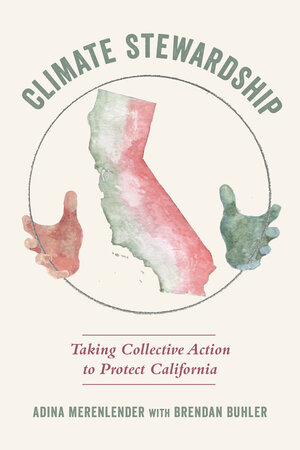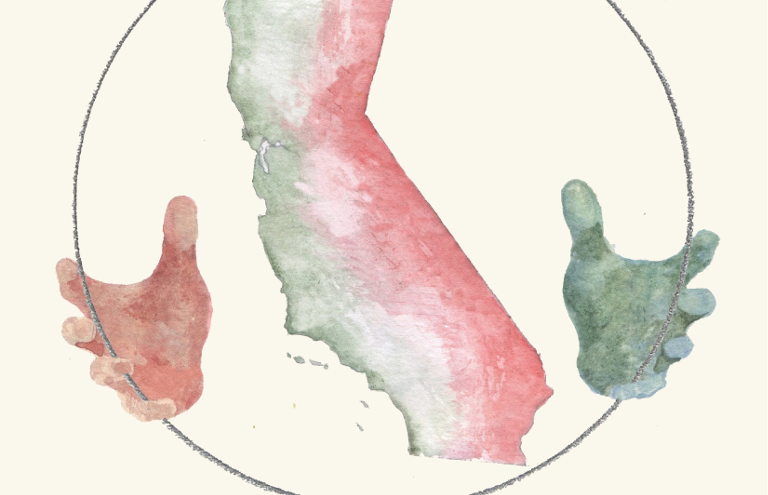 Excerpted from Climate Stewardship: Taking Collective Action to Protect California by Adina Merenlender and Brendan Buhler, published by the University of California Press. © 2021 by Adina Merenlender and Brendan Buhler.
Excerpted from Climate Stewardship: Taking Collective Action to Protect California by Adina Merenlender and Brendan Buhler, published by the University of California Press. © 2021 by Adina Merenlender and Brendan Buhler.
Everyone on planet Earth is learning how vulnerable societies are to planet-wide threats. Extreme events, such as destructive wildfires, magnified by climate disruption are causing loss of life and damage that exceed our capacity to cope. Climate change is a threat to humanity that, much like COVID-19, disproportionately hurts the poor and marginalized. Inner-city communities exposed to high levels of particulate matter from pollution are known to be at higher risk of mortality from COVID-19. Similarly, for climate change, those living within inner-city heat islands or in areas with poorly constructed infrastructure are more impacted. The same is true for poorer nations.
Eliminating systemic racism and its hold on science and society and ensuring fair treatment, access, and opportunity for all is going to require a lot more listening and committed work. This work is critical to address climate change. People of color are more concerned about climate change and, because of socioeconomic inequalities, will be more impacted by extreme weather and events.
Many people have noticed that the pandemic has brought clearer skies (until the fires and accompanying smoke came early). Bending the curve for COVID-19 for many regions has required sheltering in place, and due to a decline in driving, flying, and industrial processes, it is estimated the 2020 annual greenhouse gas emissions will be about 7 percent less than those for 2019. While this would be the largest annual percentage drop observed since WWII, it would still only reduce emissions to the level of 2006—far too high to limit global warming to 2°C, especially if annual increases return after the pandemic. It is a grim irony that it took a lockdown to clear the air, but maybe it’s also a hopeful sign. As millions of people have been wrenched from normal life, we’re all learning how contingent our “normal” was on our choices and how we can make different ones. It is possible to imagine the world anew. Surely this is a skill we will need to stave off climate disruption and adapt to coming changes.
Environmental and social contexts vary widely across California, and so too the actions shared in this book. Local communities are best suited to identify, design, and implement what is needed to improve community and ecosystem resilience. The actors in the book draw on different life experiences and perspectives and express different ways of knowing their environment and society. They bring their whole person to the effort and come up with personal touches based on what sticks and helps people stay engaged, such as naming trees as they’re planted, or making it fun, like fishing in the Los Angeles River.
The actions they take together span ecological restoration, civic engagement, environmental justice, conservation, communication, and participation in research. Hands-on stewardship, such as restoring tule marsh, removing invasive species, and planting oaks, makes ecosystems and those that tend them healthier. Advocating for walk/bike paths, infill housing, and carbon neutrality at city and county planning meetings produces results that change lives and mitigate climate change. Redistributing food and gardening provide fresh local produce where it’s needed and save precious carbon and water. Conserving core wildlands and connecting critical remnants will help species be able to move and adapt to climate change. Informal education, whether inside a museum or on the streets with Climate Corps, demonstrates how to talk about climate change and engage the public in a common vision about what can be done. Climate science requires long-term data from a multitude of locations that scientists alone cannot cover, but a willing public can help crowdsource the necessary data.
Most of the climate actions described throughout this book rely on group efforts. What we do together matters, like wearing a mask to stop the spread of a novel disease. We can help our neighbors, and they can help us. Communities are adopting novel approaches embedded within nature, from ecosystem restoration to promoting regenerative economies, that stay within planetary boundaries and are focused on thriving rather than infinite growth. While physically distancing, we are mobilizing for racial justice, standing up for science, and calling for an end to climate disruption. Climate education and engagement is a key social intervention to help stabilize the climate, and momentum is building through the COVID-19 crises. Together, we can reinvent “normal” life to be regenerative and strengthen our interconnection with nature and interdependence with each other.
Joy comes from connecting with others in a purposeful way that transcends self. Working together, we can make California resilient and experience lasting joy. That joy can help give hope to the larger challenge climate change presents. Maybe the most important lesson the present catastrophes can teach us is this: we are not powerless, and we must work together to save the Earth, our only home.





